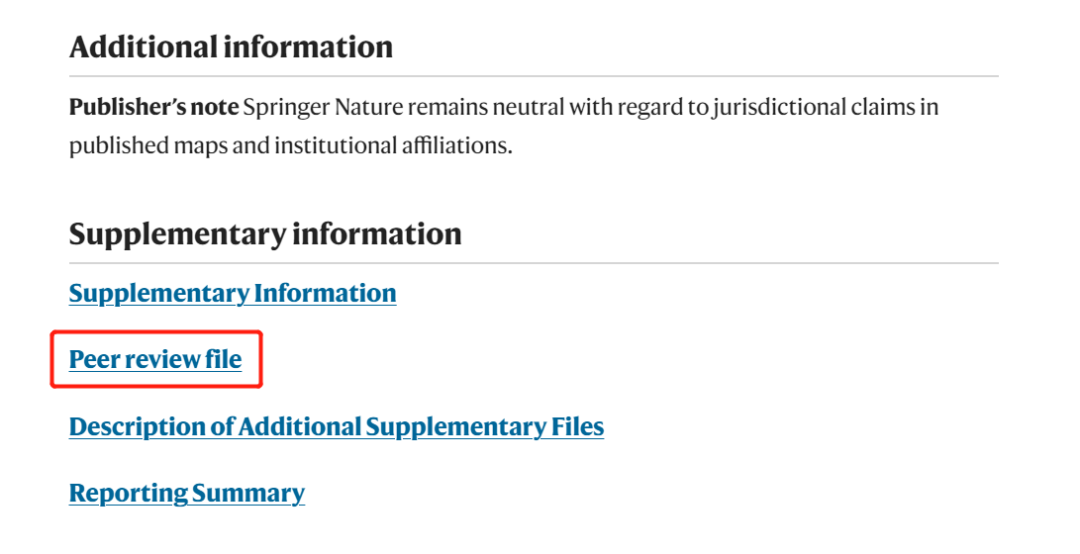【摘要】 期刊论文返修时,需要在Response中对审稿人的修改意见进行点对点的回复。在回复的时候有小伙伴就会有疑问了,是应该详细阐述自己修改的原因还是简要的展示自己是怎样修改的即可呢?
期刊论文返修时,需要在Response中对审稿人的修改意见进行点对点的回复。在回复的时候有小伙伴就会有疑问了,是应该详细阐述自己修改的原因还是简要的展示自己是怎样修改的即可呢?
首先Response Letter是有固定的套路的,你需要对评审专家的提问进行逐一回复,叫做“item-by-item response”或者“point-to-point response”。其中有几个要点:
首先一定要感谢审稿人,对于审稿人提出的每一个问题,回答的越多越好,写的比较详细的话甚至有时候Response本身会比原论文要长,但是回答中最重要的部分一定要言简意赅的放在第一句,对重点进行强调,这样可以一目了然,提高审稿人的审稿速度,审稿人更希望你能逐条分层次解答他的疑惑!另外要能够让审稿人不再去看revision。
通常审稿人会对自己提出的问题进行编号,这种情况比较常见,我们则需要按照问题编号进行逐一回复。
如果审稿人没有自行编号,而是发了一段或者几段很长的话,问题也含糊不清,这种情况下就需要我们对审稿意见进行整合和凝练,分成几个问题之后再进行逐一回复。
极少情况下,审稿人会从宏观角度给出评价和建议,通常会出现两种极端的意思,一种是对文章没有什么意见,那就客气的回复审稿人即可,另外一种则是认为研究做的不行,这种就要和审稿人据理力争,回复形式也多样化,只要逐条阐述自己的观点,结构清晰即可。
举个例子:一
Reviewer: The writing level is not up to the requirements and needs to be improved. (写作水平不够并需要改进)
这时候我们就可以在response letter中这样回复
[Suggestion]: The writing level is not up to the requirements and needs to be improved. (一定要把问题再写一遍,一次revision的时间可能审稿人都忘了他提了什么意见,不要让他再回去翻)
[Reply]: Thanks for your suggestions(感谢他), the writing skill has been improved. (告诉结果)We have discussed the writing problems with a professional English supervisor, he gave us several suggestions, which have all been adopted and accordingly adjusted in the manuscript. We feel sorry for causing you unnecessary troubles in reviewing, we hope that the revised version may meet your exceptions.
这个例子是审稿人提出的语言问题,回复难度较低,从这个例子可以看出我们的response letter一定要写的很详细但是不要给审稿人带来不必要的麻烦。
举个例子:二
Reviewer: The authors may want to explain the reason why they have chosen to mention some of the methods at the beginning of Section 3.2 rather than mentioning them in subsections 3.2.1 and 3.2.2?
这时候我们就可以在response letter中这样回复
[Suggestion]: The authors may want to explain the reason why they have chosen to mention some of the methods at the beginning of Section 3.2 rather than mentioning them in subsections 3.2.1 and 3.2.2? (把问题再写一遍)
[Reply]: Thank you for pointing out this problem in the manuscript(感谢他). We have restructured Section 3 in the revised manuscript. (告诉结果) Some methods mentioned at the beginning of subsection 3.2 have been moved to another subsection. In the revised manuscript, subsection 3.1 is dedicated to describing methods of using unsupervised learning for descriptors. Consequently, the descriptions of methods [63], [65], [69], [70], [71] have been moved to subsection 3.1. Subsection 3.2 focuses on the extraction of sequence features. The descriptions of methods [74], [75] remainin subsection 3.2.
这个例子是在你肯定论文表述没有出错的情况下,审稿人认为你的论文中存在疑点,没有看懂,需要你来解释,那么你可以在response中进行解释,最好是引经据典,让审稿人明白你的意图。
如果是因为论文中的错误或者表述不清而造成的疑惑,那我们需要对论文进行修改,然后依据修改的部分进行回复。
举个例子:三
Reviewer: The problem of fixed length input sequence (for protein sequences or for compound SMILES sequences) for the deep neural network models is not mentioned at all.
这时候我们就可以在response letter中这样回复
[Suggestion]: The problem of the fixed-length input sequence (for protein sequences or for compound SMILES sequences) for the deep neural network models is not mentioned at all. (把问题再写一遍)
[Reply]: Thank you for the above suggestion. (表示感谢) Following your suggestion, we have added a new subsection called “Fixed-length size” in Section 6 to describe the problem of fixed length input sequence for the deep neural network models. (告诉结果)
审稿人认为我们并没有提及”固定长度的输入“这一问题。因此,要专门拿出一个段落来描述这个问题,首先分析这个问题产生的原因,然后分析这个问题造成的影响,最后查找文献,列举可行方案。
示例小编就不再一一列举了,原则就是语气要客气、诚恳。另外,再告诉大家一个小技巧哦,小编在看 nature 的子刊 nature communications 收录的文章时,发现主页的最后会附上 Peer review file(审稿意见和作者回复),当然不是每一篇文章都有的(需要作者同意),小伙伴们也可以去看看别人是如何回复的,学习下别人的回复技巧哦~

最后,祝大家多多发文章!
参考链接:
https://www.zhihu.com/question/512498367/answer/2341534110
https://www.zhihu.com/question/512498367/answer/2349668747
https://www.zhihu.com/question/512498367/answer/2349668747
https://zhuanlan.zhihu.com/p/345624045
本文所有内容文字、图片和音视频资料,版权均属科学指南针网站所有,任何媒体、网站或个人未经本网协议授权不得以链接、转贴、截图等任何方式转载。











 您已经拒绝加入团体
您已经拒绝加入团体

 2022-03-15
2022-03-15
 24916
24916
 0
0










